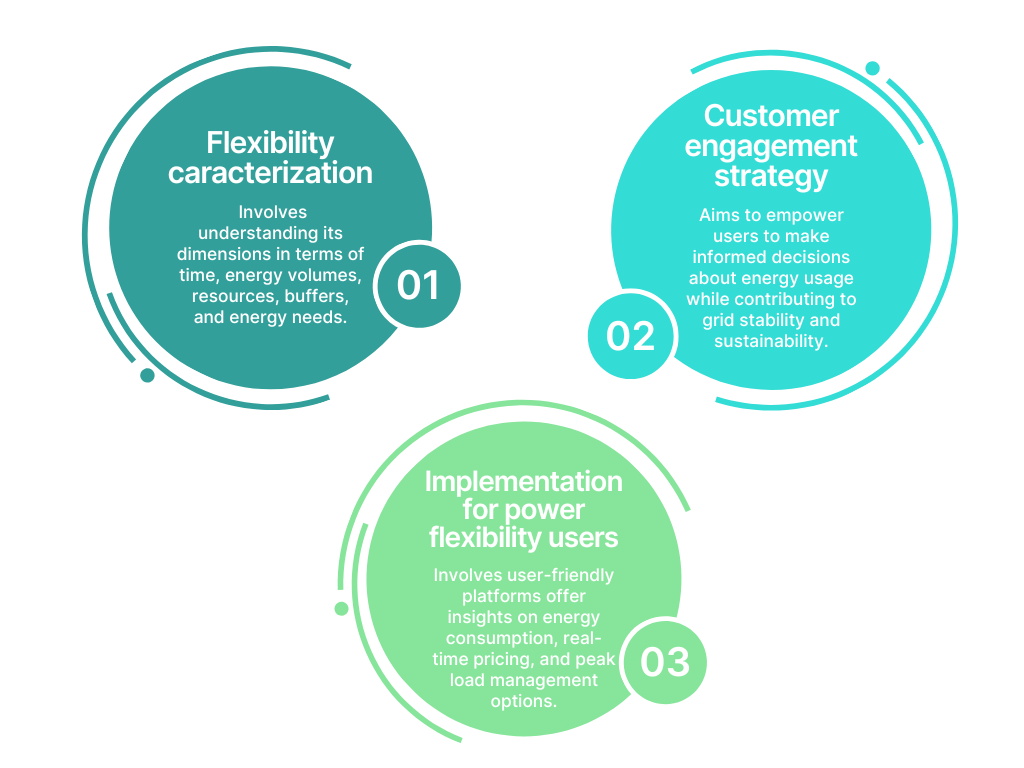Flexibility characterization, customer engagement strategy and implementation for power flexibility users
Article authored by Ione López González, from Iberdrola
Characterizing power flexibility is crucial in today’s dynamic energy landscape. As we delve into understanding the diverse aspects of power flexibility, it is essential to explore customer engagement strategies and their effective implementation for power flexibility users.
Characterizing Power Flexibility
Power flexibility refers to the ability of a power system to respond to changes in power demand and supply. This can involve adjusting generation, consumption, or storage in reaction to market signals, grid conditions, congestions or other factors. The characterization of power flexibility involves understanding its dimensions in terms of time, energy volumes, resources, buffers, and energy needs.
Flexibility in power markets and systems requires a comprehensive assessment of constraints, barriers, and time scales. This includes gate closure and physical delivery considerations. Characterization, research, and analysis are essential to identify the potential resources for flexibility and the technical and economic aspects of utilizing them effectively.
Furthermore, the characterization of flexibility providers plays a significant role in understanding demand-side flexibility. Methodologies for quantifying energy flexibility available all service providers are critical for leveraging this resource optimally.
Customer Engagement Strategy
Engaging customers in the realm of power flexibility involves creating awareness of social benefits, providing incentives, and facilitating their participation in demand response programs, energy efficiency initiatives, and distributed energy resource management with hardware and software tools. An effective customer engagement strategy aims to empower users to make informed decisions about their energy usage while contributing to grid stability and sustainability.
Personalized communication, user-friendly interfaces, and transparent information on the benefits of flexible energy usage are key components of customer engagement strategies. By involving customers in the dialogue about power flexibility, utilities and energy service providers can foster a sense of ownership and responsibility among users.
Implementation for Power Flexibility Users
Implementing power flexibility strategies requires collaboration among stakeholders including utilities, regulatory bodies, technology providers, and end-users. It involves deploying advanced metering infrastructure, smart grid technologies, and IoT-enabled devices for real-time monitoring and control.
For power flexibility users, implementation involves access to user-friendly platforms that provide insights into their energy consumption patterns, real-time pricing signals, and options for load shifting or curtailing during peak periods. Incentive programs such as time-of-use pricing or demand response incentives can encourage active participation from users.
Moreover, integrating renewable energy sources with storage technologies enables users to capitalize on clean energy generation while contributing to grid stability through flexible usage patterns.

In conclusion, understanding the characterization of power flexibility is essential for shaping customer engagement strategies and their successful implementation for power flexibility users. By fostering collaboration between stakeholders and empowering end-users with knowledge and tools, we can harness the full potential of power flexibility while driving sustainable energy practices.
This article summarizes key takeaways from Deliverable 6.2, titled “Flexibility Characterization and Customer Engagement Strategy implementation report” developed within the framework of the BeFlexible project. To access the complete document, please click here.
Stay tuned about BeFlexible by following us on LinkedIn and Twitter!





